Disclosure: This article contains affiliate links. We may earn a commission from purchases at no extra cost to you, which helps our travel content.
The vibrant capital of Grenada often reveals itself first through its postcard-perfect harbor—a horseshoe of colorful buildings embracing azure waters, crowned by verdant hills. But beyond this Caribbean tableau lies a landscape architect's dream: a volcanic island where the wild forces of nature have sculpted a playground for the adventurous spirit. Having spent three decades designing spaces that connect humans with healing environments, my recent expedition to St. George's became less about observation and more about immersion in the island's therapeutic adrenaline offerings. This isn't the Grenada of languid beach days (though those certainly have their place). This is Grenada as nature intended—raw, challenging, and profoundly transformative. Join me as we explore how this 'Spice Isle' delivers not just aromatic treasures but soul-stirring adventures that reconnect us with our primal selves and the healing power of calculated risk.
Cascading Thrills: Conquering Grenada's Hidden Waterfalls
My fascination with water features in therapeutic landscapes drew me first to Grenada's cascades—not as passive elements to admire, but as dynamic systems to engage with physically. The Seven Sisters Falls, nestled within the Grand Etang National Park, offers what I consider the island's premier canyoning experience. Unlike the more touristed falls, these seven interconnected cascades require a guide and proper equipment to fully explore.
The approach itself is a master class in biophilic design—the narrow trail winds through a dense rainforest canopy where the ambient temperature drops noticeably, creating that quintessential microclimate transition that landscape architects prize. The real adventure begins at the uppermost fall, where local guides from Adventure Grenada outfit you with helmets and harnesses for a controlled rappel down the 50-foot rock face adjacent to the rushing water.
What struck me most was how the experience engages all senses simultaneously—the thundering water creating a natural sound therapy, the cool mist activating tactile awareness, and the kaleidoscope of rainbows forming in the spray offering visual meditation points. This is therapeutic design at its most primal.
For serious adventurers, I recommend the full-day expedition that includes all seven falls, culminating in a heart-pounding jump into the deepest pool. My waterproof backpack proved invaluable here, keeping my camera equipment dry while allowing me to document the incredible endemic plant species that have adapted to this vertical water garden.

💡 Pro Tips
- Book with Adventure Grenada at least three days in advance—their guides are certified in swift water rescue techniques.
- Wear quick-dry clothing rather than swimwear alone; the approach hike can be muddy and abrasive against bare skin.
- Bring water shoes with aggressive tread; the volcanic rock becomes extraordinarily slippery when wet.
Volcanic Depths: Diving Grenada's Underwater Sculpture Garden
As someone who has dedicated my career to creating healing environments, I found myself particularly drawn to British sculptor Jason deCaires Taylor's underwater installation off the coast of St. George's—a submerged garden of concrete figures that serves both as art and as a coral regeneration project. This underwater sculpture park represents a fascinating intersection of my two passions: sculptural landscapes and therapeutic environments.
The dive site, located in Molinere Bay just north of St. George's harbor, requires advanced certification due to occasionally challenging currents. What makes this adventure extraordinary is how it transforms conventional SCUBA diving into a contemplative art experience. Descending through clear Caribbean waters, you first glimpse what appears to be a gathering of human figures standing in a circle on the sandy bottom—Taylor's piece titled 'Vicissitudes'—now partially claimed by coral growth and marine life.
The technical aspects of the dive demand attention—buoyancy control must be precise to avoid disturbing the developing reef structures. My dive computer proved essential for monitoring depth and bottom time while allowing me the mental space to appreciate the artistic elements of this underwater installation.
What fascinates me most as a landscape architect is how this site demonstrates the ultimate in adaptive reuse—concrete forms deliberately designed to encourage specific coral species to colonize particular surfaces, transforming an artificial installation into a living, breathing ecosystem. The therapeutic aspect comes not just from the meditative quality of diving itself, but from witnessing this powerful collaboration between human creativity and natural processes.

💡 Pro Tips
- Book with Dive Grenada, which employs marine biologists who can explain the ecological significance of the installation.
- Visit during early morning hours when marine life is most active and underwater visibility typically reaches its peak.
- Bring an underwater camera with a wide-angle lens to capture the scale of the installations against divers.
Rainforest Ziplines: Aerial Perspectives of Grand Etang
The Grand Etang National Park represents one of the Caribbean's most intact rainforest ecosystems, centered around an ancient volcanic crater lake. While most visitors experience this landscape from ground level, Grenada's relatively new canopy tour provides a perspective that speaks directly to my professional interest in viewing landscapes from multiple elevations.
The Grenada Rainforest Adventures course consists of seven progressive ziplines traversing the upper canopy of the rainforest, culminating in a 700-foot line that crosses directly over a section of the crater rim. What makes this experience particularly valuable is how it reveals the stratified nature of the forest ecosystem—something typically invisible from hiking trails.
From this aerial vantage point, I could observe how the emergent layer of the forest (dominated by massive sandbox trees and mahogany) creates distinct microclimates for the understory vegetation. As a landscape architect who specializes in therapeutic environments, I was struck by how the changing perspectives—from ground to canopy and back again—creates a natural form of vestibular therapy, challenging our sense of balance and spatial orientation in ways that research has shown can reduce anxiety and improve cognitive function.
The guides demonstrate impressive knowledge of ethnobotany, pointing out medicinal plants used in traditional Grenadian healing practices. This reminded me powerfully of my early work designing my wife's healing garden, where we incorporated similar principles of traditional plant medicine into a contemporary therapeutic landscape.
For this adventure, proper gear is essential. My quick-dry hiking pants proved ideal for both the humid conditions and the harness comfort during long zipline runs. I'd also recommend a secure camera attachment system, as the perspectives from above are truly worth documenting.
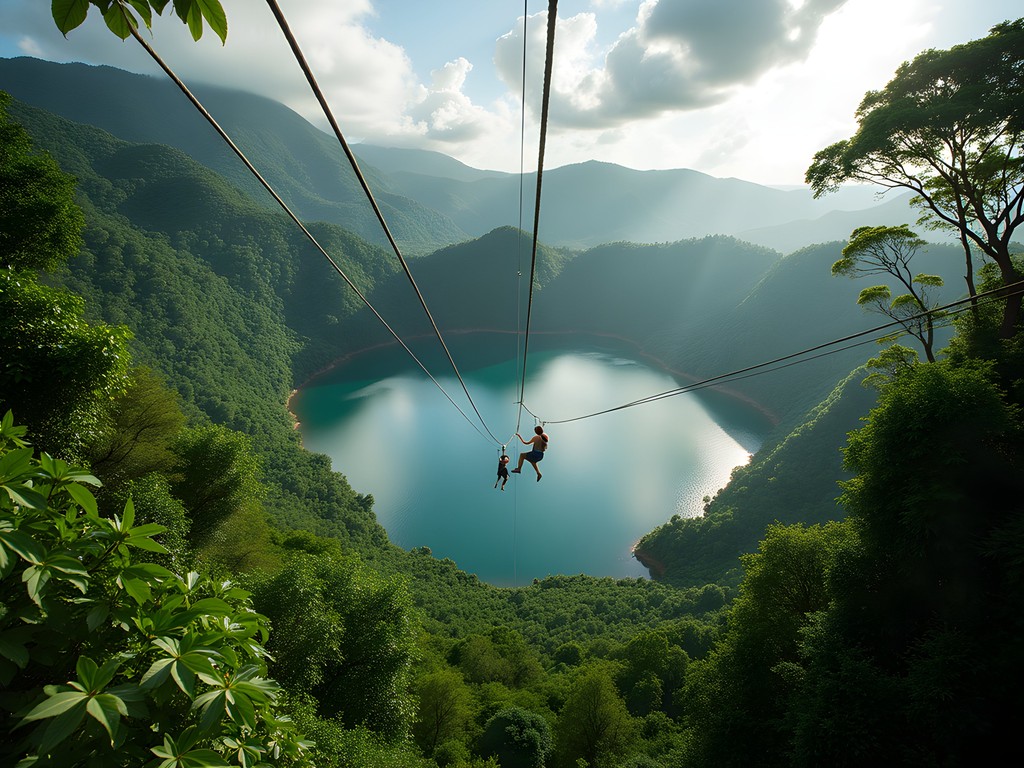
💡 Pro Tips
- Request the first tour of the day (8:00 AM) when wildlife activity peaks and before the afternoon rain showers typically begin.
- Bring binoculars to spot the Grenada dove and Mona monkeys from the aerial platforms between ziplines.
- Wear closed-toe shoes with good traction for the short hikes between platforms.
Sea Kayaking the Volcanic Coastline
The geological history of Grenada has created a coastline of extraordinary complexity—volcanic headlands interspersed with hidden coves and sea caves that remain inaccessible to larger vessels. Sea kayaking along the island's western shore offers both physical challenge and unparalleled access to these secret spaces.
I arranged a full-day expedition with Grenada Seafaris, departing from the small fishing village of Gouyave rather than the more touristed St. George's harbor. This alternative departure point allowed us to explore the less-visited northwestern coastline, where the volcanic formations create dramatic sea arches and partially submerged caves.
The physical demands of open-water kayaking shouldn't be underestimated—the Atlantic swells that wrap around Grenada's northern point create challenging paddling conditions even on calm days. However, the reward comes in the form of access to pristine snorkeling sites where few others venture. At one such location—a nameless cove our guide simply called 'the cathedral'—near-vertical walls of black volcanic rock create a natural amphitheater open to the sea, where the acoustics transform the sound of waves into something resembling a Gregorian chant.
As someone who studies how environments affect human psychology, I found this location particularly moving. The interplay of sound, light, and the rhythmic motion of paddling creates what psychologists call a 'flow state'—a form of active meditation that research suggests can be profoundly restorative for cognitive function.
My waterproof dry bag proved essential for protecting camera equipment and botanical specimens I collected (with permission) for later identification. The guides are knowledgeable about both the geological history of the coastline and the medicinal properties of the coastal plants we encountered during our shore breaks.

💡 Pro Tips
- Book the full-day rather than half-day tour to reach the most dramatic and least-visited sections of coastline.
- Request the traditional Grenadian lunch option, which includes local provisions cooked on a portable stove during a beach break.
- Apply reef-safe sunscreen generously to exposed skin—the reflection from water intensifies UV exposure even on cloudy days.
Hiking Mount St. Catherine: Grenada's Volcanic Summit Challenge
At 2,757 feet, Mount St. Catherine represents the highest point on Grenada and the remnant of the island's most recent major volcanic activity. While not technically difficult by mountaineering standards, the hike to its summit presents a genuinely challenging adventure due to the consistently steep grade and often muddy conditions. As someone who studies how topographical variation affects human psychology, I found this hike particularly fascinating.
The trail begins deceptively, winding through former nutmeg plantations where the orderly rows of cultivation gradually give way to increasingly wild secondary forest. About an hour into the ascent, you enter primary rainforest that has remained largely undisturbed since colonial times. The transition is marked by a dramatic increase in biodiversity—epiphytes and bromeliads appear in greater numbers, and the cacophony of wildlife becomes noticeably more complex.
What makes this hike exceptional from a landscape perspective is how it traverses five distinct ecological zones in a relatively short distance, creating what we in therapeutic landscape design call 'compression'—the experience of multiple landscape typologies in close proximity, which research suggests stimulates cognitive function and improves mood through environmental novelty.
The summit itself often sits shrouded in clouds, creating an otherworldly microclimate where moss and unusual ferns thrive. On clear days, the panoramic view encompasses both the Atlantic and Caribbean coasts simultaneously—a powerful reminder of Grenada's position at the boundary between these two great bodies of water.
For this challenging hike, proper footwear is essential. My hiking boots provided crucial ankle support and traction on the notoriously slippery clay soils near the summit. I also relied heavily on my trekking poles to navigate the steepest sections, particularly during descent when knee strain becomes a significant factor.
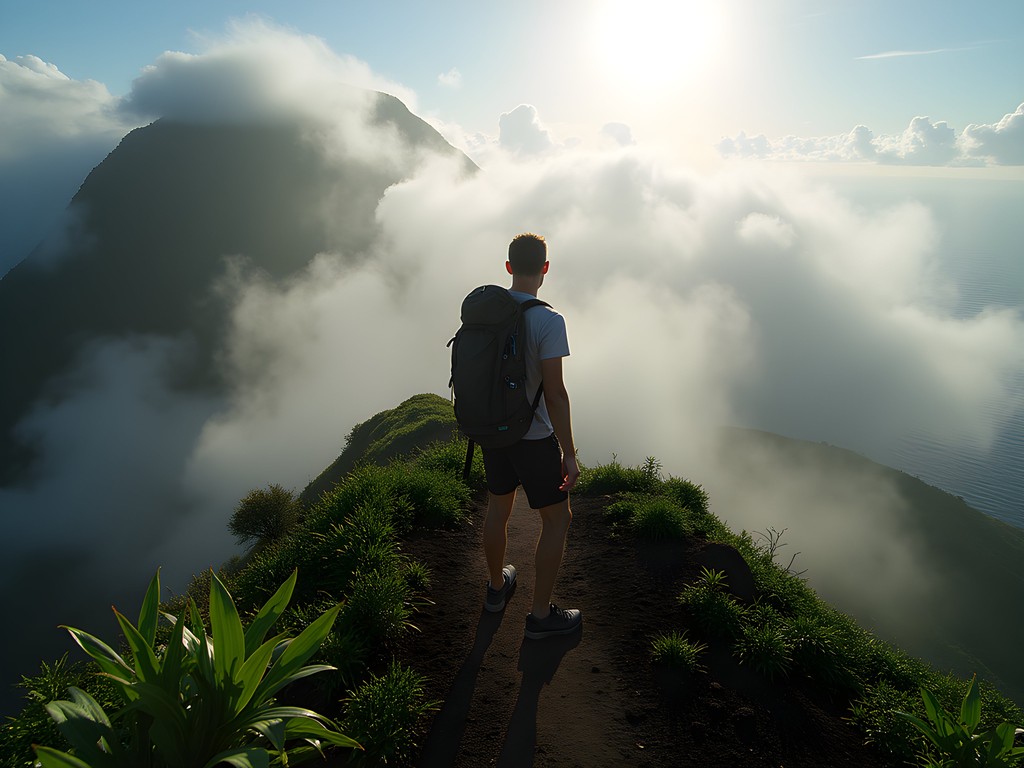
💡 Pro Tips
- Start no later than 7:00 AM to maximize your chances of clear views from the summit before afternoon clouds roll in.
- Hire a local guide through the Grenada Forestry Department—they can identify medicinal plants and share traditional knowledge about the mountain's volcanic history.
- Pack layers despite the tropical climate—the temperature at the summit can be 10-15 degrees cooler than St. George's, with significant wind chill factors.
Final Thoughts
St. George's, Grenada offers far more than its reputation for spices and beaches might suggest. As a landscape architect who specializes in therapeutic environments, I've found the island's diverse adventure offerings provide something more valuable than mere adrenaline—they create what environmental psychologists call 'restorative challenges,' physical experiences that demand full attention while simultaneously connecting us to natural systems. Whether you're rappelling down waterfalls, diving among underwater sculptures, or summiting volcanic peaks, Grenada's adventures offer couples a chance to grow together through shared challenge while experiencing environments that heal through engagement rather than passive observation. My professional work has convinced me that the most effective therapeutic landscapes are those that ask something of us—and Grenada's adventures deliver precisely this balance of challenge and reward. When will you answer the island's call to adventure?
✨ Key Takeaways
- Grenada's adventure activities span multiple ecosystems—from underwater sculpture gardens to volcanic summits—providing diverse experiences for couples seeking varied challenges.
- The island's volcanic origin creates unique adventure opportunities not found on coral-based Caribbean islands, including dramatic coastlines, waterfalls, and challenging topography.
- Local guides often provide valuable cultural and botanical knowledge that enhances the adventure experience with insights into traditional healing practices and ecological relationships.
📋 Practical Information
Best Time to Visit
February through April, when rainfall is minimal and temperatures remain moderate
Budget Estimate
$3,500-5,000 per couple for one week including luxury accommodations and all adventure activities
Recommended Duration
7-10 days to experience all major adventure offerings without rushing
Difficulty Level
Challenging
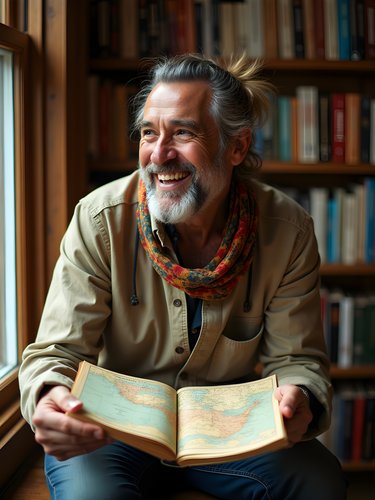

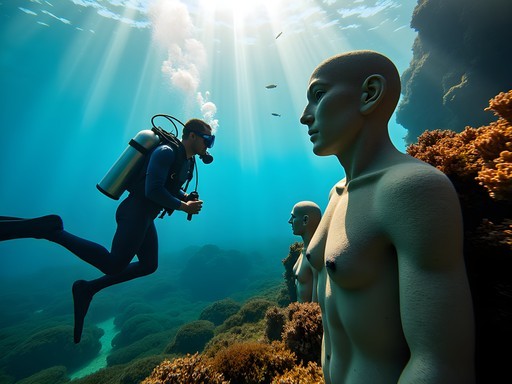
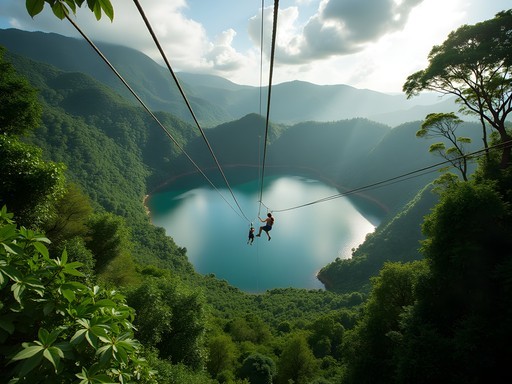
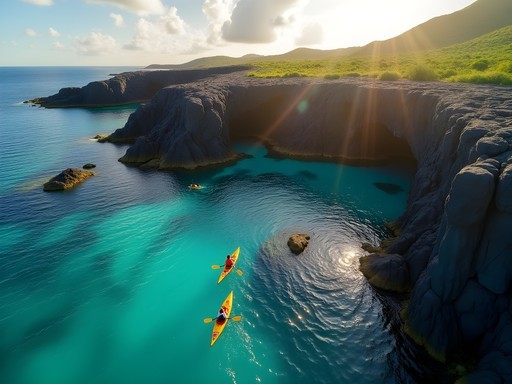
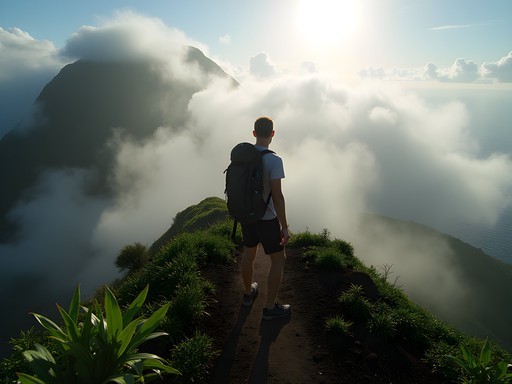



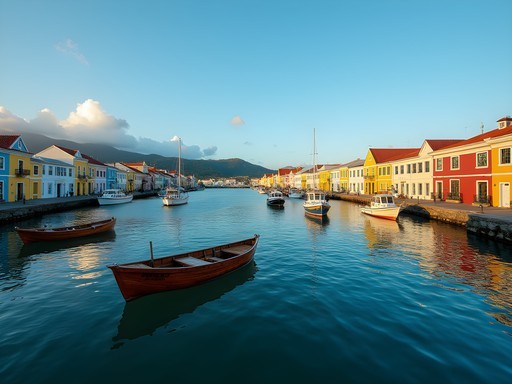






Comments
Sage Dixon
Taylor, fantastic guide! I was in St. George's back in June and would add one more adventure for the thrill seekers: river tubing through the rainforest at Balthazar River. It's less known than the activities you mentioned but equally exhilarating. The guides make it safe but the rapids are just exciting enough to get your heart pumping. For anyone trying the sea kayaking route mentioned, I'd recommend going early morning (7-9am) when the waters are calmest and you can spot more marine life. The volcanic coastline has these amazing little hidden caves that you can paddle into during low tide. Just bring plenty of water and sun protection - that Caribbean sun is no joke even in the morning!
starseeker
River tubing sounds perfect! Any particular company you'd recommend for booking that?
Sage Dixon
We used Adventure Grenada for the tubing - they were great and included transportation from St. George's in the price!
luckyhero
OMG the rainforest ziplines look AMAZING!!! Adding this to my bucket list right now! 🤩
oceanclimber
Just got back from St. George's last month and did the underwater sculpture garden dive! It was INCREDIBLE. The contrast between the art and the growing coral was surreal. For anyone planning to go - we used Dive Grenada and they were fantastic with beginners. The water visibility was amazing but I wish I had brought my underwater camera instead of relying on the tour company's photos. Taylor - did you get to see the "Vicissitudes" circle of children statues? That one gave me chills!
luckyhero
I'm heading there in November! Did you need to be an experienced diver or do they take beginners too?
oceanclimber
They definitely take beginners! I only had my open water certification and was fine. Some parts of the garden are shallow enough for snorkeling too if you don't dive at all.
starseeker
Great post! How difficult is the hike to these hidden waterfalls you mentioned? Are they accessible for someone with moderate hiking experience?
Sage Dixon
Hey there! I've done most of these falls and they range from easy 20-minute walks to more challenging 2-hour hikes. Seven Sisters and Concord are the most accessible. Just wear good hiking sandals as paths get slippery!
starseeker
Thanks so much! That's really helpful. I'll put Seven Sisters on my list since I'm bringing my teens along.
Fatima Sims
Taylor, you captured the essence of Grenada's adventure side perfectly! I was there last spring and did the sea kayaking along the volcanic coastline - absolutely surreal experience. For anyone planning to go: start early morning (around 7am) when the water is calmer and you can see straight to the bottom. We spotted so many sea turtles! The local guide we hired (Patrick from Grenada Adventours) took us to this hidden cove that wasn't accessible by foot. Ended up having a fresh coconut breakfast on a completely deserted beach. Magic! Definitely wear sun protection though - that Caribbean sun is no joke even in the morning.
summergal
A hidden beach accessible only by kayak sounds amazing! Did you need to book the guide in advance or can you find them when you get there?
Fatima Sims
I booked Patrick about a week in advance through email. High season (Dec-April) gets busy so I'd recommend booking ahead. His local knowledge made all the difference!
summergal
Those ziplines look incredible! Adding this to my bucket list ASAP!
happyguide
Going to St. George's in January - are the waterfalls still good to visit then or is there a rainy season I should know about?
Fatima Sims
January is actually perfect timing! You'll be there during dry season (Dec-May) so the trails won't be muddy, but the falls will still be flowing nicely from the tail end of rainy season. Just bring your hiking sandals or similar water shoes as the rocks can be slippery. Seven Sisters was my favorite - less crowded than Annandale!
happyguide
Thanks so much! Will definitely check out Seven Sisters then. Already have water shoes packed!
blueone
Just got back from Grenada last week and did that underwater sculpture garden dive! Absolutely mind-blowing experience. The contrast between the art and the coral growth gave me chills. We went with Dive Grenada and our guide knew exactly which angles made for the best photos. If you're planning to go, definitely bring an underwater camera - I wish my photos did it justice! The current was pretty strong the day we went though, so maybe check conditions before booking.
Fatima Sims
Which sculpture was your favorite? I was mesmerized by the ring of children holding hands. Something about seeing it slowly being reclaimed by the ocean just hit different.
blueone
The lost correspondent (guy at the typewriter) was my absolute favorite! Something haunting about him just sitting there underwater. But those children were amazing too - so much emotion in those sculptures.
escapenomad
Just got back from Grenada last week and did the zipline tour at Grand Etang! Absolutely worth every penny. Pro tip: go early in the morning (we went around 9am) to avoid both the cruise ship crowds and the afternoon rain showers. The guides were hilarious and made everyone feel safe. One thing I wish I'd known - the waterfall hikes can get REALLY muddy, so don't wear your nice sneakers like I did! Bring water shoes or hiking sandals that can get wet. Also, the local rum punch at the end of most tours is stronger than it tastes... learned that the hard way! 😂
dreamrider
Haha the rum punch warning is appreciated! How long was the zipline tour from start to finish?
escapenomad
It was about 3 hours total including the safety briefing and transportation from the meeting point. Totally worth it for the views!
Douglas Bradley
Taylor, this is an excellent breakdown of Grenada's adventure offerings! I visited St. George's last year and can confirm the Underwater Sculpture Garden is truly otherworldly. For anyone planning to dive there, visibility tends to be best in the morning hours before the afternoon winds kick up. I'd also add that hiring a local guide for the rainforest hikes is absolutely worth it - they point out medicinal plants and historical details you'd otherwise miss. The local knowledge transforms a good hike into an unforgettable experience. Did you get a chance to try the night kayaking tours? The bioluminescence in certain areas is spectacular.
escapenomad
Douglas, what diving certification level would you recommend for the sculpture garden? I'm only PADI Open Water certified.
Douglas Bradley
Open Water is perfectly fine! Most of the sculptures are at depths of 5-8 meters, well within OW limits. Just make sure to bring your underwater camera - you'll want those shots!
Venture X
Premium card with 2X miles, $300 travel credit, Priority Pass